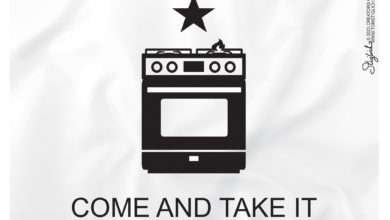Medal of Honor Monday: Army Command Sgt. Maj. Robert M. Patterson
For a lot of military heroes, actions taken in battle are carried out without thinking, and they’re sometimes hazy afterward due to the fog of war. For Army Command Sgt. Maj. Robert Martin Patterson, the actions that earned him the Medal of Honor during a firefight in Vietnam had to be reiterated to him because he couldn’t remember most of it.
Patterson was born in Carpenter, North Carolina, and raised in nearby Fayetteville, near Fort Bragg. He had four sisters and an older brother. The family was poor, so at an early age, Patterson helped as best he could by working on the family’s tobacco farm, where he said he plowed fields using a mule because they didn’t have tractors.
During his last year of high school in 1966, Patterson dropped out to join the Army. He was initially placed with the 82nd Airborne Division before being transferred to the 101st Airborne Division’s 17th Cavalry Regiment in August 1967 in preparation for a tour in Vietnam. The unit deployed that December.
In a Library of Congress Veterans History Project interview, Patterson said he was welcomed to Vietnam with an immediate mortar attack. In his first few months of deployment, he carried out several convoy escorts and search-and-destroy missions.
On May 6, 1968, Patterson’s unit was tasked with sweeping an area near the village of La Chu to search for enemy soldiers who’d reportedly moved in.
Then a specialist fourth class, Patterson was a fire team leader in a 34-man platoon. He said they came across no problems until about 1 p.m., when they neared the village and ran into a well-armed and much larger North Vietnamese Army battalion. Patterson’s platoon sergeant was shot almost immediately, and its lead squad was quickly pinned down by heavy automatic weapons and rocket-propelled grenade fire from two enemy bunkers.
“It’s strange to hear things go whistling over your head,” Patterson said of the little he remembered from that day. “We had very little cover to get down behind — a little tree here, a mound of dirt over there.”
After this point, Patterson said he doesn’t remember anything for a few hours. But according to his Medal of Honor citation and what he was told, he and two members of his team moved forward under a hail of gunfire to destroy the enemy’s bunkers.
Soon after, Patterson noticed that more of his comrades were being fired on by a third bunker that was being defended by enemy soldiers in one-man positions known as spider holes. Without hesitation, Patterson moved forward — despite the intense small-arms and grenade fire — to successfully assault and destroy those positions.
But again — Patterson doesn’t remember it.
“The platoon sergeant being shot is the last thing I remember. Everything else is just a blank blur,” Patterson said in his 2003 Library of Congress interview. “The next thing I knew, it was 5 o’clock that afternoon, and I was in a 500-pound-bomb crater.”
He said he and several injured and fallen comrades stayed in the crater until eventually continuing their assault through the night.
In total, Patterson single-handedly destroyed five enemy bunkers, killed eight enemy soldiers and captured seven weapons. His courageous actions helped his unit advance, allowing them to eventually penetrate the enemy’s defensive position.
The next day, Patterson received the Silver Star — something he was a bit confused by.
“I was thinking to myself, ‘Why did I get this? I didn’t do anything.’ And that’s when we found out that we had actually gone up against a reinforced regiment,” Patterson said.
After that, Patterson continued with his deployment as usual until he returned home in December 1968, right after being promoted to sergeant. At some point, he married a woman named Linda and had two sons.
Several months after his return, in September 1969, Patterson said he was bewildered to learn that he had been nominated for the Medal of Honor. On Oct. 9, 1969, Patterson received the nation’s highest honor for valor from President Richard M. Nixon during a White House ceremony. Three other soldiers also received the medal that day.
Patterson said that, over time, he’s learned that wearing the medal is much harder than what it took to earn it.
“I think that a person who wears the Medal of Honor is not wearing it for themselves. They’re wearing it for everyone who was there, particularly for those who didn’t come back,” he said. “Everything I do, before I do it, I will stop and think, ‘Is it going to embarrass that medal?’ … If it is, then I won’t do it.”
Patterson remained in the military until he retired as a command sergeant major in 1991 after serving in the Gulf War. He went on to work as a benefits counselor at the Department of Veterans Affairs.
Patterson divorced at some point. While working for the VA in 2005, he met another woman named Linda, whom he married in 2007. The latter Linda Patterson said her husband was so humble that she didn’t even know he had earned the Medal of Honor until six months after they’d started dating.
Patterson retired from the VA in 2010 after having triple bypass surgery, according to his wife. The couple eventually moved to Pensacola, Florida, where they currently live. Patterson enjoys NASCAR and watching golf, and he often speaks about his experiences at military and high school events.
Earlier this year, Patterson attended a wreath-laying ceremony at Arlington National Cemetery in recognition of Medal of Honor Day.
This article is part of a weekly series called “Medal of Honor Monday,” in which we highlight one of the more than 3,500 Medal of Honor recipients who have earned the U.S. military’s highest medal for valor.
Source: Department of Defense
Content created by Conservative Daily News is available for re-publication without charge under the Creative Commons license. Visit our syndication page for details.


